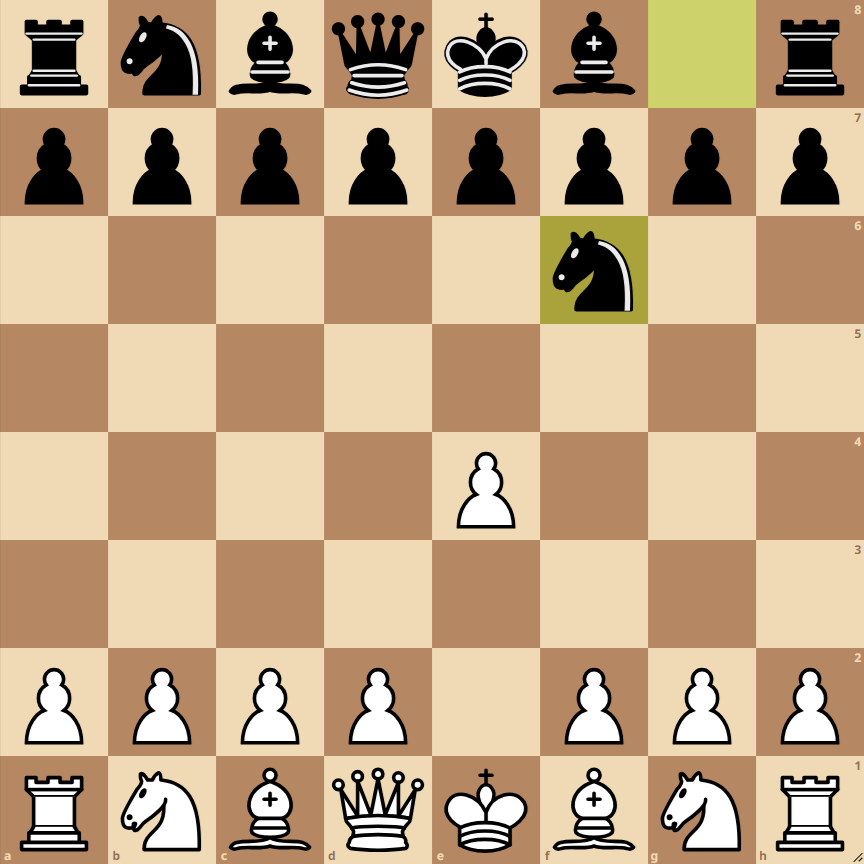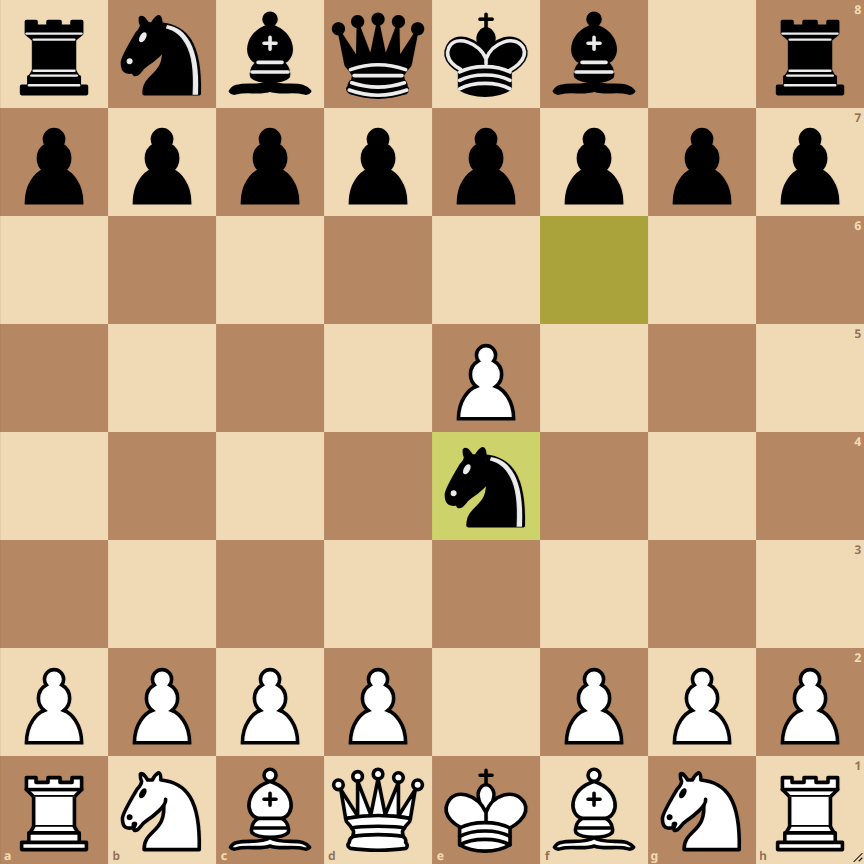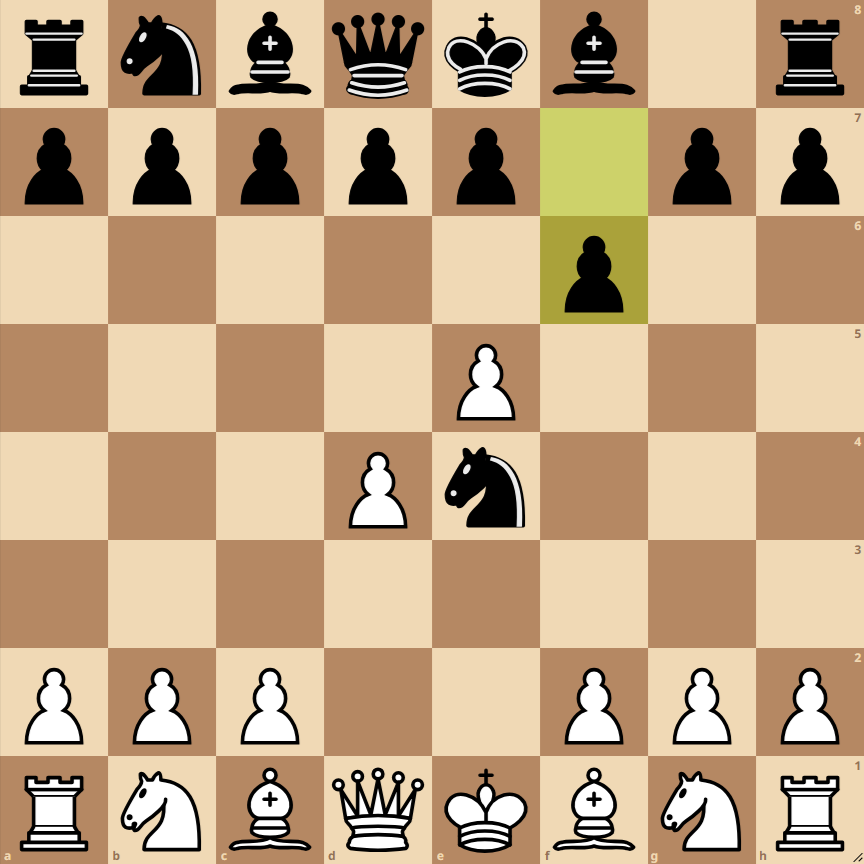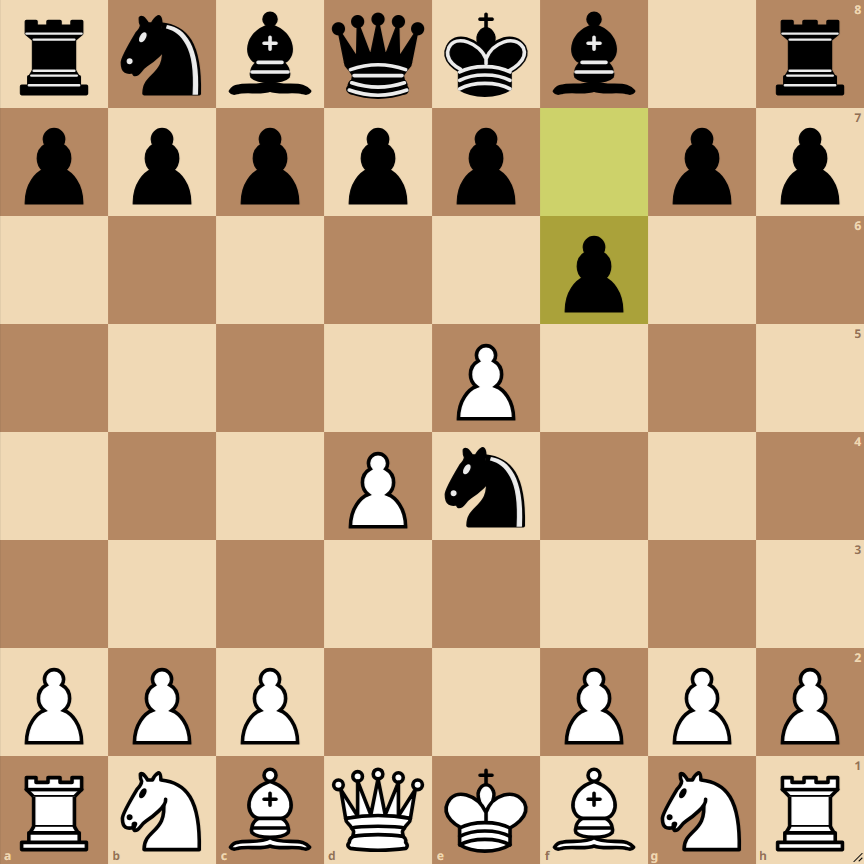How to Play the Alekhine Defense – Modern Mokele Mbembe Variation



- 1. e4: White starts aggressively, controlling the center and preparing the development of their pieces, especially the bishop and queen.
- 1… Nf6: Black responds by challenging White’s central pawn while developing a knight to an active position.
- 2. e5: White advances their pawn, attacking the black knight, and aiming to gain space in the center.
- 2… Ne4: The black knight moves to a more central square, increasing its influence on the board.
- 3. d4: White continues to control the center, preparing the development of their minor pieces and protecting their advanced pawn on e5.
- 3… f6: Black counterattacks, aiming to undermine White’s center and free their pieces.
Variations of the Alekhine Defense – Modern Mokele Mbembe Variation
3… d6
An alternative for Black is to play 3… d6, aiming to attack the White center and prepare the development of the bishop through c8.
4. f3
White can opt for 4. f3, reinforcing their center and preparing to chase the Black knight away from e4.
4… Nc6
Black might respond to 4. f3 with 4… Nc6, relocating the knight and maintaining pressure on the center.

